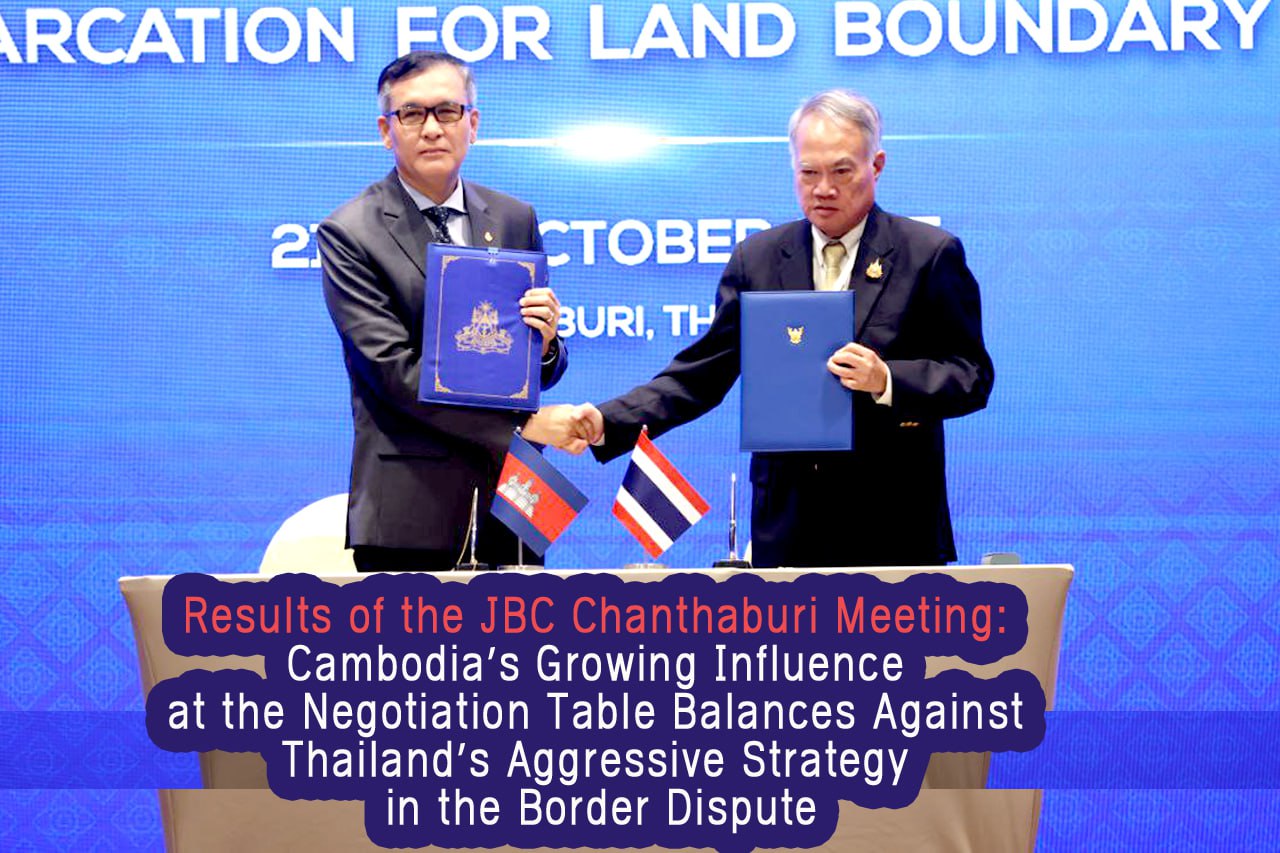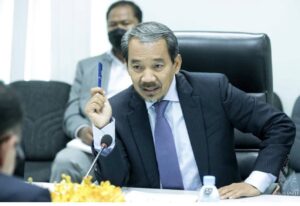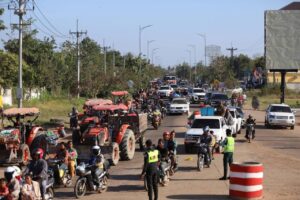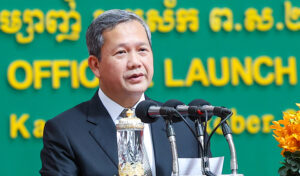Results of the JBC Chanthaburi Meeting: Cambodia’s Growing Influence at the Negotiation Table Balances Against Thailand’s Aggressive Strategy in the Border Dispute
 Results of the JBC Chanthaburi Meeting: Cambodia’s Growing Influence at the Negotiation Table Balances Against Thailand’s Aggressive Strategy in the Border Dispute
Results of the JBC Chanthaburi Meeting: Cambodia’s Growing Influence at the Negotiation Table Balances Against Thailand’s Aggressive Strategy in the Border Dispute
The Special Meeting of the Cambodia–Thailand Joint Boundary Commission (JBC), held on October 21–22, 2025, in Chanthaburi Province, Thailand, marked a new opening toward resolving the long-standing border issue. Yet, this opening seems to have provided significant strategic advantages for Cambodia, the nation that has endured aggression from its neighbor.
At first glance, the meeting appeared to be filled with cordiality and mutual goodwill for peace, as both countries publicly emphasized friendship. However, beneath the surface, amid the still-burning tensions and sporadic violence along the border, the meeting symbolized a turning point—Cambodia’s quiet but powerful diplomatic pushback against Thailand’s militarized posturing.
1. Agreement to Use the French–Siam Maps: Recognition of Cambodia’s Sovereignty
The meeting reached an agreement to reconstruct 15 border posts based on the original French-era boundary markers. This was not a mere technical exercise—it was an implicit acknowledgment by Thailand that the French–Siamese maps are legally valid under international law and must be used as the official reference for demarcation.
This represents a major diplomatic victory for Cambodia, which can now proudly say it has “reclaimed the legitimacy of the original maps.” In practical terms, this invalidates Thailand’s unilateral “self-drawn” maps, which have no standing under international law.
Using the French maps as the reference point means that areas where Thai soldiers have unlawfully encroached—such as Chouk Chey and Prey Chan villages in Cambodia—must revert to their original status. Because border demarcation affairs do not depend on decisions made by the Thai military.ើThe achievement of the border agreement in Chanthaburi clearly shows that the Joint Boundary Commission has delivered a firm and decisive rebuke to the Thai military for its unprofessional conduct and actions beyond the legal scope of its mandate.
2. LiDAR Technology – Cambodia’s Silent Weapon
The meeting also agreed to use LiDAR (Light Detection and Ranging) technology for terrain measurement and the creation of orthophoto maps. This represents another strategic loss for Thailand, as LiDAR’s high precision removes the ambiguity Thailand has often exploited to politicize the issue for domestic ultranationalist sentiment. It will no longer serve as a deceptive tool to manipulate public sentiment or gain further popularity.
For Cambodia, this was a masterstroke—shifting the negotiation from a political-military game to a scientific and technical process. In doing so, Cambodia successfully neutralized Thailand’s strategy of delaying demarcation and using it for short-term political gain amid Thailand’s internal divisions.
3. Priority Area Between Posts 42–47: Thailand Signals Retreat
The area between border posts No. 42 and 47 — which includes Chhouk Chey–Nong Chan and Prey Chan–Nong Ya Kaeo villages — has long been a zone where Thai military forces repeatedly violated Cambodia’s sovereignty, occupying Cambodian land illegally and provoking incidents in order to stir up extreme nationalist sentiment. Today, however, that area is turning toward mutual cooperation for joint demarcation and reconstruction of new border markers, based on the original French-era model at the original locations.
The agreement to conduct joint measurements and place provisional markers in this area signifies that Thailand has backed down — no longer able to rely on power displays or coercive tactics — and must now recognize the area as a priority zone for joint border surveying. The agreement also states that the temporary markers will not affect the international border line, which amounts to Thailand’s implicit acknowledgment that the existing international boundary remains legally valid.
This development effectively undermines the extreme nationalist notion that “wherever the Thai army reaches, that is Thai territory,” a mindset rooted in aggressive and neo-colonial thinking. Thailand can no longer pursue its “Salami-Slicing Strategy,” as doing so would now severely damage its credibility and tarnish the honor of both the Thai people and the Thai nation — not only at present, but in the eyes of the international community for years to come.
4. Cambodia Uses Peace as a Weapon to Undermine Thai Aggression
The meeting reaffirmed that both authorities and military forces must maintain peace, avoid provocative actions, and ensure security in the area. This means that Cambodia has once again succeeded in bringing Thailand back onto the path of legality and peaceful principles under the 2000 Memorandum of Understanding (MOU), after Thailand had previously violated it and even sought to nullify it through the reckless actions of its border troops in Prey Chan and Chhouk Chey villages inside Cambodian territory.
In clearer terms, Thailand has been attempting to turn its aggressive military activities on Cambodian soil into bargaining leverage at the negotiation table in Chanthaburi Province. However, Cambodia, through restraint and the refusal to respond with force, has instead gained the upper hand — achieving tangible diplomatic benefits and reinforcing a foundation of durable peace between the two nations, while upholding the ceasefire with the utmost effectiveness.
5. Silent but Not Still — Cambodia’s strategy to prevail at the negotiation table
This fruitful outcome is the result of the strategy “Calm but not silent — avoiding war, creating peace,” a firm, sharp, and wise approach adopted by the Royal Government of Cambodia under the leadership of Prime Minister Hun Manet.
While Thailand resorted to nationalism and military maneuvers to instill fear among civilians, Cambodia instead exercised the utmost patience and pursued formal negotiations grounded in international law to secure its legitimate rights.
At this point, Cambodia has not only preserved its territorial integrity but also safeguarded the lives of both nations’ civilians and armed forces, maintaining effective control over the peace and stability of the situation.
This is precisely the strategy Cambodia has employed throughout the recent five-day armed confrontation — provoked by Thai military aggression — where Thailand fired the first shots at Cambodia. Yet, the results of Cambodia’s composure have demonstrated a profound truth: silence does not mean surrendering or trading land for peace, but rather forms part of a broader strategy to preserve Cambodia’s territory with enduring stability and greater clarity than ever before.
6. Thailand showed arrogance and defiance, yet faltered at the Chanthaburi negotiation table
The JBC Chanthaburi meeting represents a major strategic victory for Cambodia and a political setback for Thailand. Cambodia has successfully drawn Thailand back into the framework of international law, rendering Thailand’s attempts to exploit nationalist sentiment ineffective and hollow.
While the Cambodian people awaited the results, the work of placing new border markers — to determine “whose land is whose” — allowed law and legal rights to speak in place of weapons. From the perspective of neighboring nations aiming to maintain good relations and cooperation with Cambodia, Thailand now has the opportunity to reconsider its aggressive, nationalist stance. Even after past provocations, Thailand could rebuild its national reputation by accepting and implementing the agreement, which would also partly remedy past wrongs against Cambodia.
At this point, it is clear: Cambodia has not been silent; it has been deliberately calm to secure victory. This victory benefits both Cambodian and Thai peoples, helping to avoid further loss of life, military casualties, civilian suffering, and other dangers.
Finally, as a political researcher, I observe that even though Cambodia and Thailand faced a five-day armed confrontation — a tragic event causing unnecessary loss of life on both sides — if both countries, especially Thailand, implement this agreement faithfully as a legally binding document and proceed with actual border demarcation on the ground, the Cambodia–Thailand border will become a model of sustainable development and stability. It will foster a neighborly relationship marked by peaceful coexistence in the near future.
By: Pin Vichey – Political Science Scholar




